SLEEPY TOURIST TOWN IN THE HILLS, Ella, Sri Lanka, 2019.12.11

Day 7 (2 of 2).
In the midst of tea plantations and cloud forests, the town of Ella situates at an elevation of 1000m above sea level and maintains a relatively cooler climate than the surrounding lowlands. Well known for its scenic valley view of Ella Rock at the Ella Gap, and a laid-back backpacker’s atmosphere, there is no surprises that the hill town has developed into the most popular tourist hub in the entire hill country. Almost all businesses in Ella are somewhat related to tourism. Because of its decent guesthouse and restaurant selection, convenience of transportation, and pleasant surrounding scenery, many travellers including us chose Ella as their base to explore the area’s hiking trails and tea plantations.
 Since July 1918, Ella railway station has been an important stop on the Main Line, the oldest railway line in Sri Lanka running from coastal Colombo to Badulla in the hill country, via Kandy.
Since July 1918, Ella railway station has been an important stop on the Main Line, the oldest railway line in Sri Lanka running from coastal Colombo to Badulla in the hill country, via Kandy.
 Just like other railway station in the country, curious dogs were often the first to greet us on the platform, especially when we had breakfast in our hands.
Just like other railway station in the country, curious dogs were often the first to greet us on the platform, especially when we had breakfast in our hands.
 Depending on the time of day, visitors would either get off at Ella from the red or blue train.
Depending on the time of day, visitors would either get off at Ella from the red or blue train.
 We stayed at Zion View Ella Green Retreat for two nights. A number of guest houses, including Zion View, are erected on the valley slope facing the Ella Gap, one of the most scenic spot in town.
We stayed at Zion View Ella Green Retreat for two nights. A number of guest houses, including Zion View, are erected on the valley slope facing the Ella Gap, one of the most scenic spot in town.
 Every room in Zion View has a terrace overlooking the Ella Gap.
Every room in Zion View has a terrace overlooking the Ella Gap.
 The terrace was the perfect spot to watch the sunrise over Ella Gap with the silhouette of Ella Rock.
The terrace was the perfect spot to watch the sunrise over Ella Gap with the silhouette of Ella Rock.
 It was also in Ella that we had our first Sri Lankan egg hoppers for breakfast.
It was also in Ella that we had our first Sri Lankan egg hoppers for breakfast.
 The two German Shepherds at Zion View always welcomed us at the hotel entrance.
The two German Shepherds at Zion View always welcomed us at the hotel entrance.
 Walking on the railway tracks is often the the most direct routes to go between attractions. Because only a few trains would pass by Ella daily, both the locals and tourists would use these tracks as footpaths during the rest of the day to reach their destinations.
Walking on the railway tracks is often the the most direct routes to go between attractions. Because only a few trains would pass by Ella daily, both the locals and tourists would use these tracks as footpaths during the rest of the day to reach their destinations.
 From our guesthouse we walked half an hour on the tracks to visit Kithal Ella falls. We reached the falls just before nightfall.
From our guesthouse we walked half an hour on the tracks to visit Kithal Ella falls. We reached the falls just before nightfall.
 Just a few kilometres away from Ella, Halpewatte Tea Factory is a popular tea plantation that offers factory tours for tourists. The factory can easily be reached by tuk tuk.
Just a few kilometres away from Ella, Halpewatte Tea Factory is a popular tea plantation that offers factory tours for tourists. The factory can easily be reached by tuk tuk.
 Halpewatte is one of better known tea plantation in the UVA Ceylon tea region.
Halpewatte is one of better known tea plantation in the UVA Ceylon tea region.
 Founded in 1971, Halpewatte is a family run business.
Founded in 1971, Halpewatte is a family run business.
 Visiting a tea factory is a good way to learn more about the variety of Ceylon tea.
Visiting a tea factory is a good way to learn more about the variety of Ceylon tea.
 From the factory, we enjoyed a panoramic view of the tea terraces and surrounding scenery.
From the factory, we enjoyed a panoramic view of the tea terraces and surrounding scenery.
 Among the many restaurants, we picked AK Ristoro in a quiet neighbourhood off the main road for dinner.
Among the many restaurants, we picked AK Ristoro in a quiet neighbourhood off the main road for dinner.
 We chose to dine at the lovely veranda area at AK Ristoro.
We chose to dine at the lovely veranda area at AK Ristoro.
 AK Ristoro serves good fusion food with Italian, Japanese and Sri Lankan touches.
AK Ristoro serves good fusion food with Italian, Japanese and Sri Lankan touches.
 We couldn’t resist but to order a can of the local Lion beer to wash down our delicious dinner.
We couldn’t resist but to order a can of the local Lion beer to wash down our delicious dinner.
 At night, the Main Street of Ella is flanked by lights and signage of restaurants and souvenir stores.
At night, the Main Street of Ella is flanked by lights and signage of restaurants and souvenir stores.
SIGIRIYA ROCK, Sigiriya, Sri Lanka, 2019.12.09

Day 5 (1 of 3).
After watching the majestic sunset from Pidurangala Rock the day before, we were excited to climb the actual Sigiriya Rock in the next morning. We get up early in order to arrive at the ticket office of Sigiriya right at 7am sharp. A short tuk tuk ride dropped us off at the gate of the archaeological park.
Reaching almost 200m above the jungle, the fortress on Sigiriya Rock was the site selected by King Kashyapa (477 – 495 AD) for his new capital. In 477AD, Kashyapa I seized the throne from King Dhatusena with a coup. His half brother and legitimated heir to the throne, Moggallana, fled to South India. Kashyapa moved the capital from Anuradhapura to Sigiriya, where he erected a city around the rock and a fortress/ palace atop the plateau. Despite the effort of fortifying Sigiriya, the eventually downfall of Kashyapa was inevitable. He was eventually defeated by Moggallana, who returned to Sri Lanka in 495AD with an Indian army. After defeating Kashyapa, Moggallana returned the capital to Anuradhapura and converted Sigiriya into a Buddhist monastery which lasted for another 800 years.
 Our tuk tuk passed by the moat of the Sigiriya fortress.
Our tuk tuk passed by the moat of the Sigiriya fortress.
 After getting the admission ticket, we entered the archaeological park of the Sigiriya Rock. The short lived capital of Kashyapa lies pretty much in ruins now.
After getting the admission ticket, we entered the archaeological park of the Sigiriya Rock. The short lived capital of Kashyapa lies pretty much in ruins now.
 We did manage to arrive earlier than most tourist groups, and enjoyed a short moment of tranquility at the base of Sigiriya Rock.
We did manage to arrive earlier than most tourist groups, and enjoyed a short moment of tranquility at the base of Sigiriya Rock.
 Going through the natural triangular gateway, our 1200 steps up the rock officially began.
Going through the natural triangular gateway, our 1200 steps up the rock officially began.
 A few dogs greeted us at the beginning of the ascend.
A few dogs greeted us at the beginning of the ascend.
 At midway, we arrived at the Mirror Wall, a 3m wall covered with a glazed material that had been around for over a thousand years.
At midway, we arrived at the Mirror Wall, a 3m wall covered with a glazed material that had been around for over a thousand years.
 Apart from modern markings, some graffiti on the Mirror Wall date back to visitors between the 6th to 14th century. These markings remind us that marking graffiti at tourist attractions has been a thousand-year-old habit of humanity.
Apart from modern markings, some graffiti on the Mirror Wall date back to visitors between the 6th to 14th century. These markings remind us that marking graffiti at tourist attractions has been a thousand-year-old habit of humanity.
 A spiral staircase led us to a series of small caves where the famous ancient frescos depicting a group of beautiful ladies. It is commonly believe that the depicted ladies are either celestial nymphs or the king’s concubines. No photography was allowed.
A spiral staircase led us to a series of small caves where the famous ancient frescos depicting a group of beautiful ladies. It is commonly believe that the depicted ladies are either celestial nymphs or the king’s concubines. No photography was allowed.
 Continued onwards from the caves of frescos, we followed the only stepped path up.
Continued onwards from the caves of frescos, we followed the only stepped path up.
 The name Sīnhāgiri, or Lion Rock, came from the lion like structure of the fortress gateway at the upper platform. Two massive lion paws guard the upper fortress gateway.
The name Sīnhāgiri, or Lion Rock, came from the lion like structure of the fortress gateway at the upper platform. Two massive lion paws guard the upper fortress gateway.
 Beyond the lion gate, a narrow stair allowed visitors to ascend in single file.
Beyond the lion gate, a narrow stair allowed visitors to ascend in single file.
 After some sweat and heavy breathing, we finally reached the top of Sigiriya. The plateau top is pretty much occupied entirely by the ruins of the fortress/palace.
After some sweat and heavy breathing, we finally reached the top of Sigiriya. The plateau top is pretty much occupied entirely by the ruins of the fortress/palace.
 Looking down to where we came, we could see the central axis of the entry path.
Looking down to where we came, we could see the central axis of the entry path.
 Looking across the jungle, the lush green Pidurangala reminded us of the amazing sunset.
Looking across the jungle, the lush green Pidurangala reminded us of the amazing sunset.
 We walked around the ruined fortress for about half an hour.
We walked around the ruined fortress for about half an hour.
 The view from the top of Sigiriya was not bad, but it was not as stunning as the view from Pidurangala Rock.
The view from the top of Sigiriya was not bad, but it was not as stunning as the view from Pidurangala Rock.
 After an exhausting morning of climbing the Sigiriya Rock, we returned to the village and prepared for our departure.
After an exhausting morning of climbing the Sigiriya Rock, we returned to the village and prepared for our departure.
 We would move on to Dambulla, a transportation hub in the region which is also famous for its Buddhist cave temples.
We would move on to Dambulla, a transportation hub in the region which is also famous for its Buddhist cave temples.
TSUKIJI OUTER MARKET (築地場外市場), Tokyo (東京), Japan, 2019.06.15
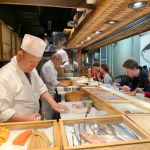
Day 1 (1/2).
Our flight landed in Tokyo Haneda at around 6am. Before our next flight to Hokkaido’s Memanbetsu Airport at noontime, we had a few hours to spare in the Japanese capital. Tsuyu (梅雨), the rainy season in Japan, was in full force in mid June. Given the proximity to the city centre, we wouldn’t want to miss the chance of revisiting Tokyo. We took the monorail and then transferred to the metro heading for Tsukiji Market. 40 minutes was all it took to reach Tsukiji. It was pouring when we came out the metro at the Kabuki-za Theatre (歌舞伎座) exit. We followed Google Map to make our way into the quiet lanes near the outer market.
Opened in 1935, the 83-year-old market has officially moved to the new Toyosu Market (豊洲市場) in October 2018. With no intention to watched a tuna auction behind glass or checked out seafood and produce stores in a brand new shopping centre like setting, we preferred to revisit the old market at Tsukiji, where the Outer Market remained open for business. At the market, generations of social interactions have developed a strong sense of community. The chaotic turret traffic at the inner market, desperate tourists cramped in long lines for an early sashimi breakfast, cafes serving simple coffee on dark wood counters, street food stalls along busy lanes and covered alleyways, the spirit and ambience of the old market have drawn us back to Tsukiji again and again. This time around, our Tsukiji experience took us to a craft coffee shop, a back lane sushi eatery and a historical Shinto shrine.
 Miraitowa (future and eternity) and Someity (calm and powerful), the two official mascot of 2020 Tokyo Summer Olympics, greeted all visitors at the arrival lobby of Haneda Airport.
Miraitowa (future and eternity) and Someity (calm and powerful), the two official mascot of 2020 Tokyo Summer Olympics, greeted all visitors at the arrival lobby of Haneda Airport.
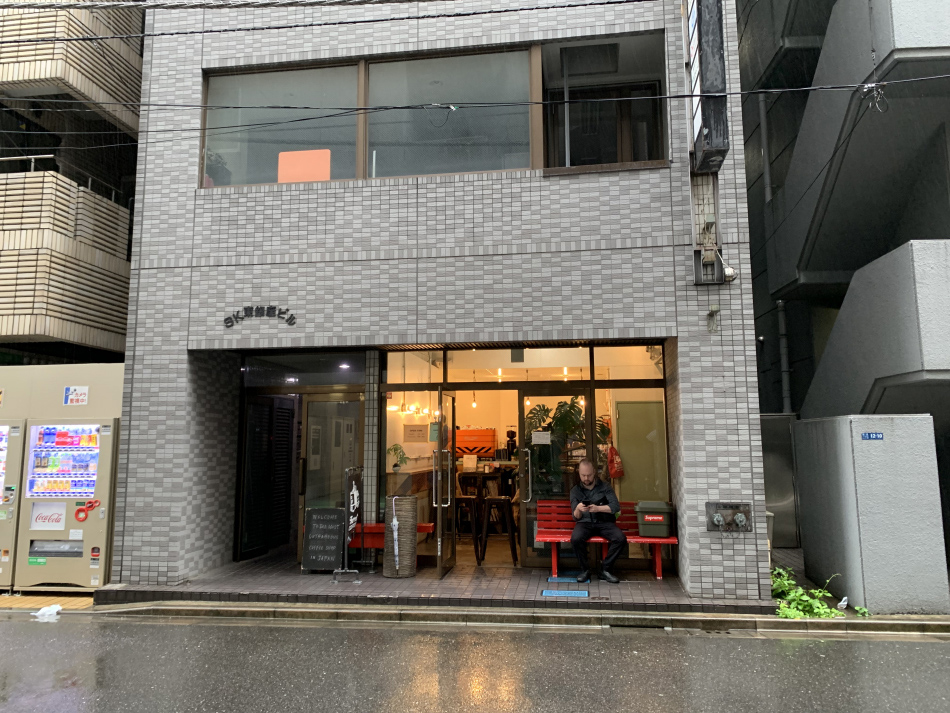 Turret COFFEE, a popular hub for everyone in Tsukiji who love coffee, offered us a decent dose of caffeine to start the day.
Turret COFFEE, a popular hub for everyone in Tsukiji who love coffee, offered us a decent dose of caffeine to start the day.
 We came just in time to be the first few customers at Turret.
We came just in time to be the first few customers at Turret.
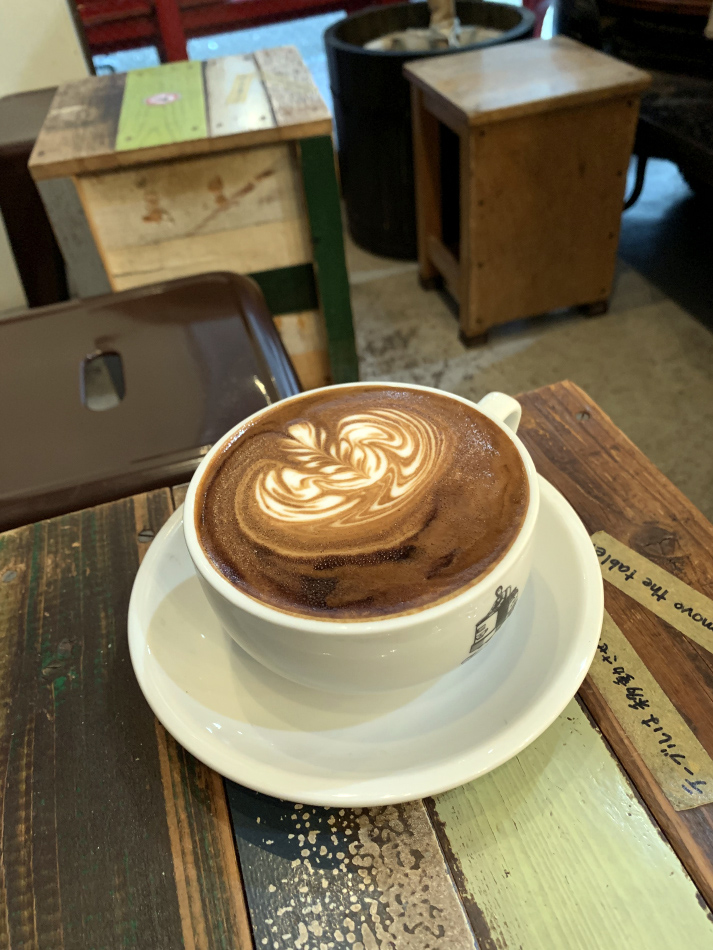 The cafe decor was simple and the coffee was aromatic and good.
The cafe decor was simple and the coffee was aromatic and good.
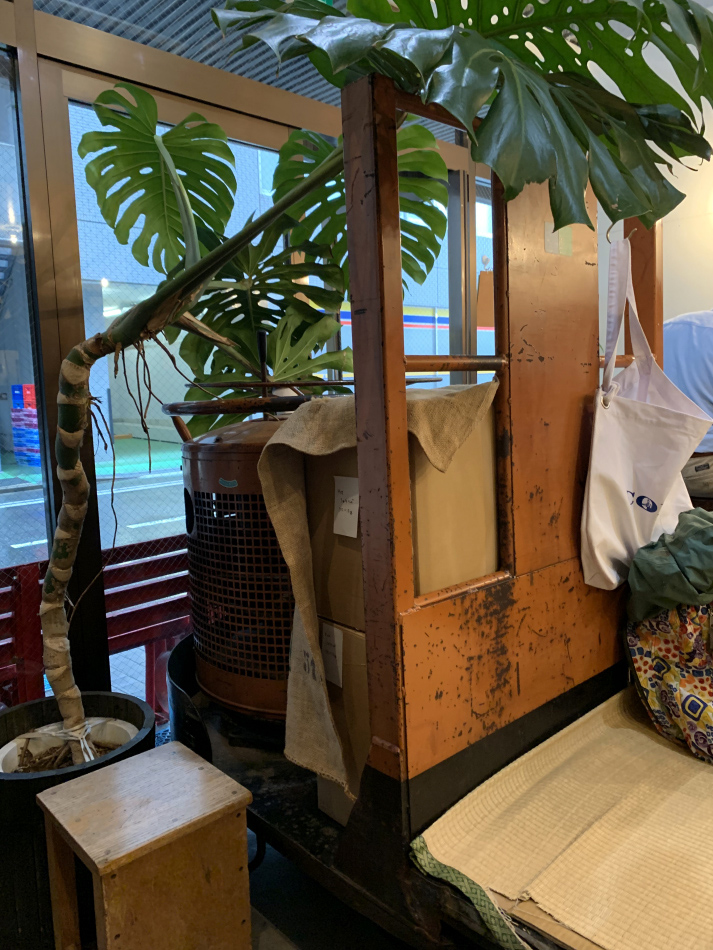 Named after the 3-wheel cart that once roamed in the lanes of Tsukiji Market, a real “turret” was placed in the centre of the coffee shop as display and also seating.
Named after the 3-wheel cart that once roamed in the lanes of Tsukiji Market, a real “turret” was placed in the centre of the coffee shop as display and also seating.
 Kitsuneya Beef Rice, one of the most popular eateries in the entire outer market, offers visitors a decent alternative to seafood.
Kitsuneya Beef Rice, one of the most popular eateries in the entire outer market, offers visitors a decent alternative to seafood.
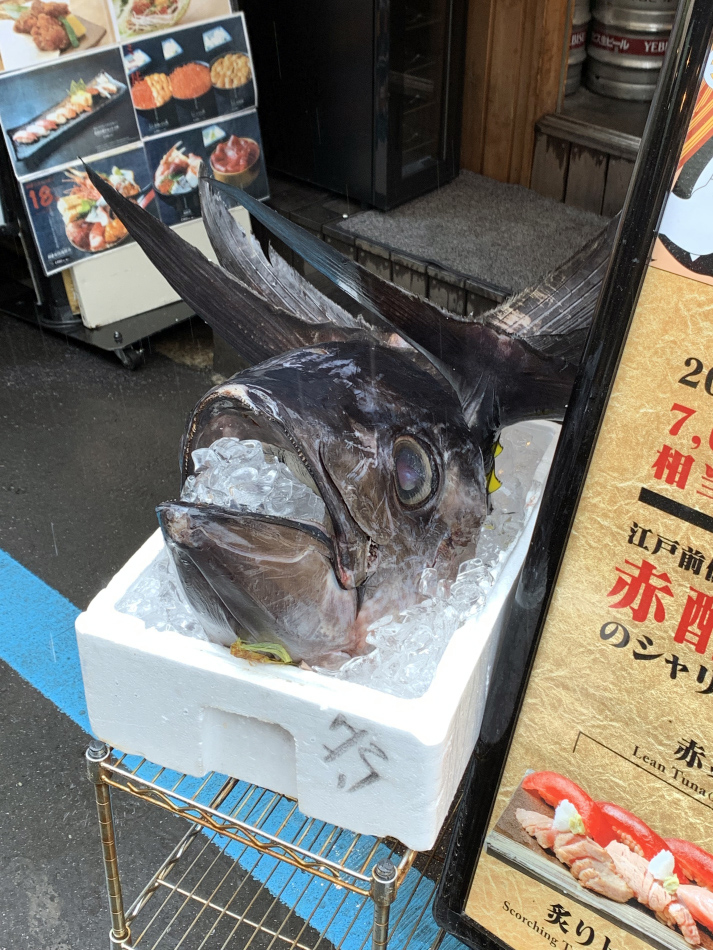 For many, leaving Tsukiji Market without picking up several pieces of tuna toro sashimi would be a big regret.
For many, leaving Tsukiji Market without picking up several pieces of tuna toro sashimi would be a big regret.
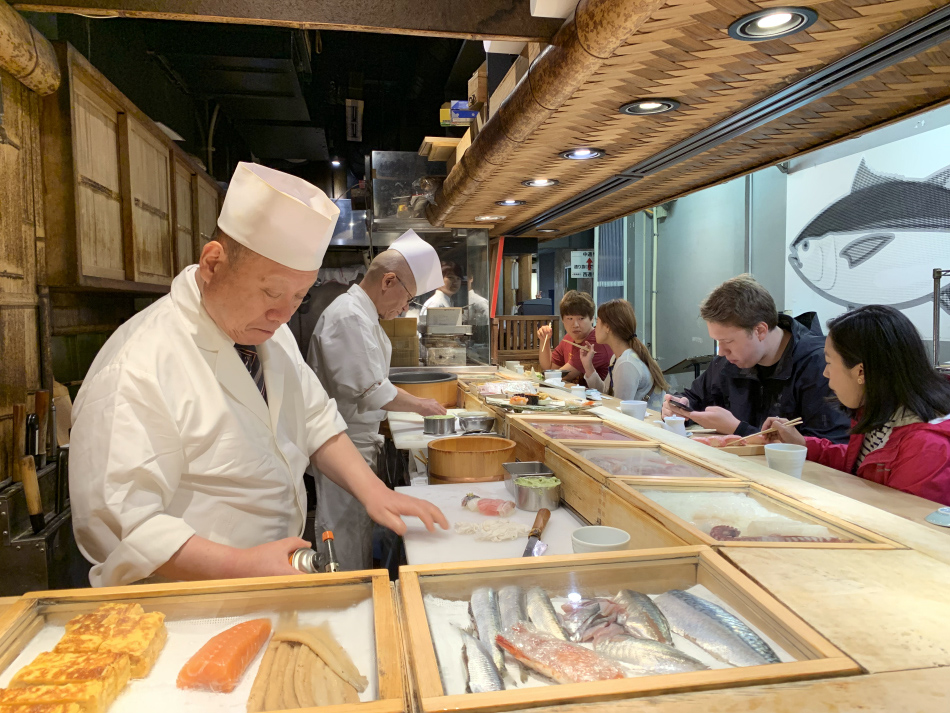 We ended up sitting down at a small sushi eatery in a covered alleyway.
We ended up sitting down at a small sushi eatery in a covered alleyway.
 Despite relocation of the inner market, the sushi at Tsukiji Outer Market was equally fresh as before.
Despite relocation of the inner market, the sushi at Tsukiji Outer Market was equally fresh as before.
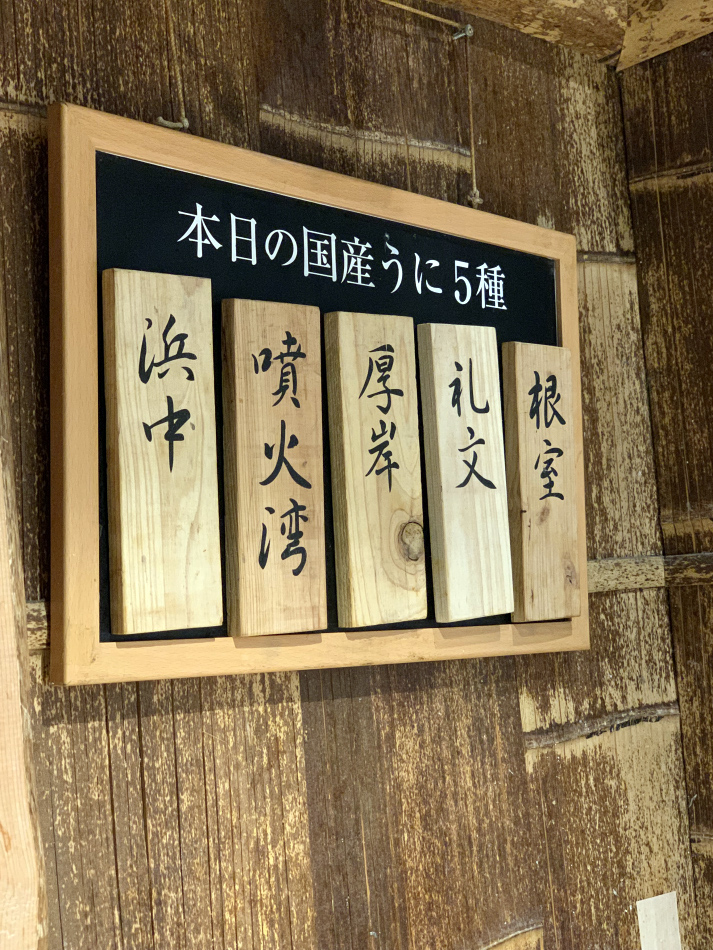 Today’s uni (sea urchin): Hamanaka (浜中), Uchiura Bay (噴火湾), Akkeshi (厚岸), Nemuro (根室), Rebun (礼文), and Nemuro (根室). Even looking at the names of the five fishing villages in Hokkaido would wet our appetite.
Today’s uni (sea urchin): Hamanaka (浜中), Uchiura Bay (噴火湾), Akkeshi (厚岸), Nemuro (根室), Rebun (礼文), and Nemuro (根室). Even looking at the names of the five fishing villages in Hokkaido would wet our appetite.
 Before returning to the airport, we made a stop at Namiyoke Inari Jinja (波除稲荷神社), the unofficial guardian shrine of Tsukiji Market.
Before returning to the airport, we made a stop at Namiyoke Inari Jinja (波除稲荷神社), the unofficial guardian shrine of Tsukiji Market.
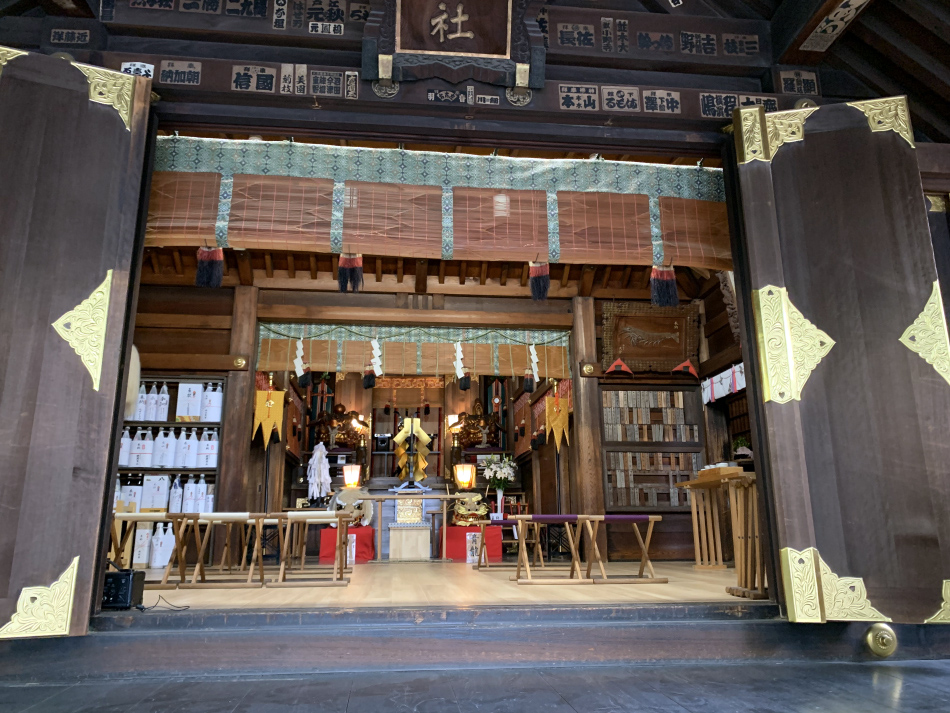 Built in 1659, the Shinto shrine dedicates to Inari (稲荷大神), the god of fertility, rice, tea, sake, agriculture. The Namiyoke Inari Jinja (波除稲荷神社) was specifically aimed to ward off disasters and diminish incoming waves.
Built in 1659, the Shinto shrine dedicates to Inari (稲荷大神), the god of fertility, rice, tea, sake, agriculture. The Namiyoke Inari Jinja (波除稲荷神社) was specifically aimed to ward off disasters and diminish incoming waves.
 The 1-ton Yakuyoke Tenjo Dai-Shishi male lion is one of the main features of the shrine. During Tsukiji Lion Festival on June 10th, the lion head would parade across the Tsukiji along with the red female lion head.
The 1-ton Yakuyoke Tenjo Dai-Shishi male lion is one of the main features of the shrine. During Tsukiji Lion Festival on June 10th, the lion head would parade across the Tsukiji along with the red female lion head.
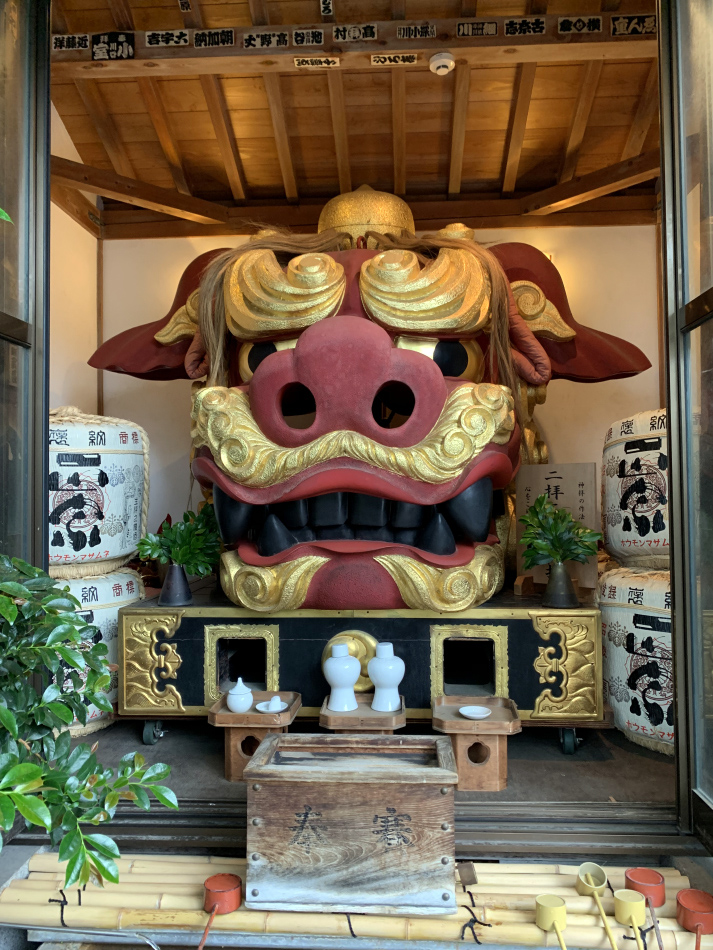 The 0.7 ton female lion head is slightly lighter than the male, but equally impressive. After coffee, sushi, and Shinto shrine, we took our time to return to Haneda Airport for the flight to Memanbetsu in Hokkaido.
The 0.7 ton female lion head is slightly lighter than the male, but equally impressive. After coffee, sushi, and Shinto shrine, we took our time to return to Haneda Airport for the flight to Memanbetsu in Hokkaido.
* * *
Introduction
HOKKAIDO ROAD TRIP, Hokkaido (北海道)
Day 1 – from Tokyo to Shiretoko Peninsula
Day 1.1 TSUKIJI OUTER MARKET (築地場外市場)
Day 1.2 ARRIVAL IN SHIRETOKO, Utoro (ウトロ)
Day 2 – Utoro
Day 2.1 SHIRETOKO FIVE LAKES (知床五湖)
Day 2.2 UTORO FISHERMAN’S WIVES CO-OPERATIVE DINER (ウトロ漁協婦人部食堂)
Day 2.3 FUREPE FALLS (フレペの滝)
Day 3 – Rausu
Day 3.1 RUSA FIELD HOUSE (ルサフィールドハウス)
Day 3.2 JUN NO BANYA (純の番屋)
Day 4 – Rausu
Day 4.1 MOUNT RAUSU (羅臼岳)
Day 4.2 FANTASTIC ORCAS, Nemuro Strait (根室海峡)
Day 5 – Lake Mashu & Lake Akan
Day 5.1 SUNRISE AT LAKE MASHU (摩周湖)
Day 5.2 MOUNT MASHU TRAIL (摩周岳) , Teshikaga (弟子屈)
Day 5.3 SILENT NIGHT AT LAKE AKAN (阿寒湖)
Day 6 – On the road from Lake Akan to Furano
Day 6.1 FISHERMEN BELOW MISTY OAKAN (雄阿寒岳), Lake Akan (阿寒湖)
Day 6.2 TREATS OF OBIHIRO (帯広), Tokachi (十勝)
Day 6.3 ARRIVING IN FURANO (富良野)
Day 7 Furano & Biei
Day 7.1 LAVENDER BUDS, Nakafurano (中富良野)
Day 7.2 FARM TOMITA (ファーム富田), Nakafurano (中富良野)
Day 7.3 BI.BLE, Biei (美瑛)
Day 7.4 PATCHWORK ROAD & PANORAMA ROAD, Biei (美瑛)
Day 7.5 NINGLE TERRACE (ニングルテラス)
Day 8 – from Furano to Otaru
Day 8.1 CHURCH ON THE WATER (水の教会), Hoshino Resorts Tomamu (星野リゾート トマム)
Day 8.2 HILL OF THE BUDDHA (頭大仏), Makomanai Takino Cemetery (真駒内滝野霊園)
Day 8.3 SEAFOOD, CANAL, & HISTORY, Otaru (小樽)
Day 8.4 RAINY NIGHT IN OTARU, Otaru (小樽)
Day 9 – Yochi & Sapporo
Day 9.1 NIKKA YOICHI DISTILLERY (余市蒸溜所), Yoichi (余市)
Day 9.2 SOUP CURRY NIGHT
Day 10 – Sapporo
10.1 OKKAIDO SHRINE (北海道神宮 )
10.2 MORIHICO COFFEE (森彦珈琲本店)
10.3 KITAKARO SAPPORO HONKAN (北菓楼札幌本館)
10.4 SATURDAYS CHOCOLATE
10.5 GOTSUBO OYSTER BAR(五坪)
10.6 MOUNT MOIWA (藻岩山) & RAMEN HARUKA (ラーメン悠)
Day 11 – Sapporo
11.1 FORMER HOKKAIDO GOVERNMENT OFFICE (北海道庁旧本庁舎)
11.2 RED STAR & GENGKIS KHAN, Sapporo Beer Museum (サッポロビール株式会社)
